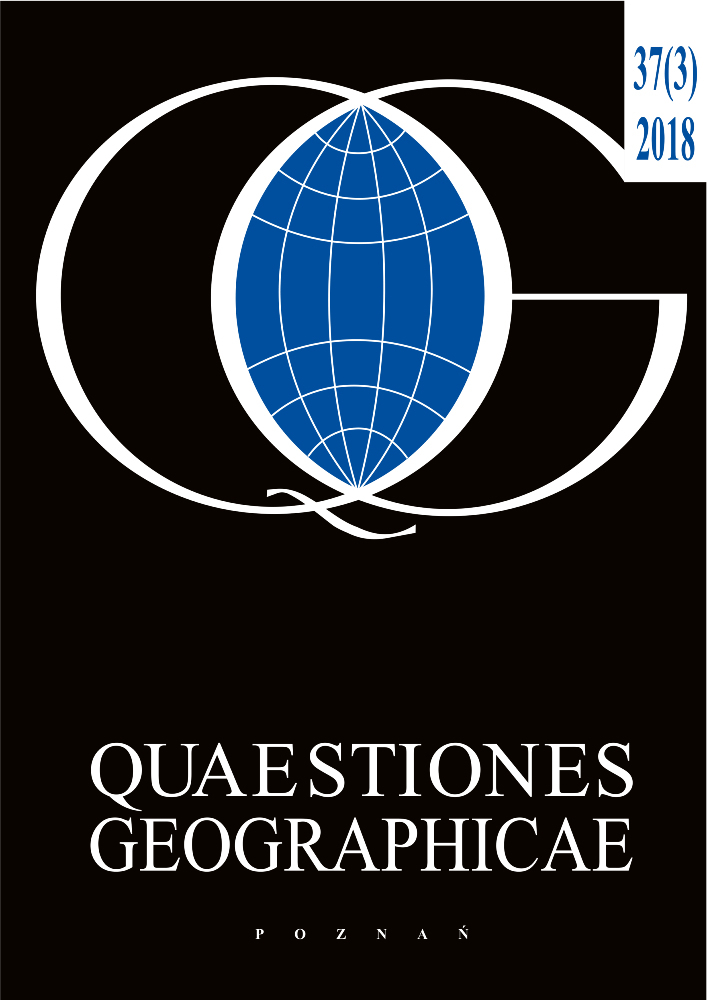Abstract
Nowadays, we are facing an enormous amount of data which are being produced by different systems. These must be effectively stored and visualized in order to enable their proper interpretation. In our research, we attempted to use circular data visualization applied on the Tour de France cycling race. Since this competition has over 100 years of history, a variety of data is available. Using the chord diagrams we tried to illustrate the long-term development of this race, with an emphasis on its spatial and sport aspects. Spatial dimension is characterised by the large number of stages and mountain climbs in such locations which altogether enhance the meaning of this major sporting event, while sport aspects aim to capture the significant personages on the scorecard. Circular visualization has found its application in many disciplines (genetics, demography, medicine, etc.). In our contribution, we point out its importance also in the visualization of the historical milestones of the most important multi-stage cycling event in the world.References
Allchin R., Bell A., 2003. Golden stages of the Tour de France: tales from the legendary stages of the world’s greatest bike race. Mousehold Press, London.
Balduck A. L., Maes M., Buelens M., 2011. The Social Impact of the Tour de France: Comparisons of residents Pre- and Post-event Perceptions. European Sport Management Quarterly 11(2): 91–113.
Bale J., 1994. Landscapes of Modern Sport. Leicester University Press, Leicester.
Bale J., 2003. Sports Geography, 2nd edition. Taylor & Francis, London.
Bao F., Chen J., 2014. Visual framework for big data in d3.js. Electronics, Computer and Applications: 47–50.
Bollongino R., Nehlich O., Richards M.P., Orschiedt J., Thomas M.G., Sell C., Fajkošová Z., Powell A., Burger J., 2013. 2000 Years of Parallel Societies in Stone Age Central europe. Science 342: 479–481.
Bostock M., Ogievetsky V., Heer J., 2011. D3 data-driven documents. IEEE transactions on visualization and computer graphics 17(12): 2301–2309.
Boury P., 1997. La France du Tour. Le Tour de France, un espace sportif à géographie variable. Harmattan, Paris.
Campos C., 2003. Beating the bounds: The Tour de France and national identity. The International Journal of the History of Sport 20(2): 149–174.
Darzentas N., 2010. Circoletto: visualizing sequence similarity with Circos. Bioinformatics 26(20): 2620–2621.
Dauncey H., Hare G., 2003. The Tour De France 1903–2003: A Century of Sporting Structures, Meanings and Values. Routledge, London.
Desbordes M., 2007. A review of the economic impact studies done on the Tour de France: methodological aspects and first results. International Journal of Sport Management and Marketing 2(5–6): 526–540.
Fife G., 2008. Tour De France: The History, the Legend, the Riders. Mainstream Publishing, Edinburgh.
Fumey G., 2006. Le Tour de France ou le vélo géographique. Annales de Géographie 115(4): 388–408.
Huang W., Hong S. H., Eades P., 2007. Effects of sociogram drawing conventions and edge crossings in social network visualization. Journal of Graph Algorithms and Applications 11(2): 397–429.
Jain A., 2014. Data visualization with the D3.JS Javascript library. Journal of Computing Sciences in Colleges 30(2): 139–141.
Krzywinski M., 2009. Circos: an information aesthetic for comparative genomics. Genome research 19(9): 1639–1645.
Ledford H., 2010. Big science: the cancer genome challenge. Nature News 464(7291): 972–974.
Lucia A., Earnest C., Arribas C., 2003. The Tour de France: a physiological review. Scandinavian Journal of Medicine & Science in Sports 13(5): 275–283.
Martis M. M., Zhou R., Haseneyer G., Schmutzer T., Vrána J., Kubaláková M., König S., Kugler K. G., Scholz U., Hackauf B., Korzun V., 2013. Reticulate evolution of the rye genome. The Plant Cell 25(10): 3685–3698.
McGann B., McGann C., 2006. The Story of the Tour de France Volume 1: 1903–1964: How a Newspaper Promotion Became the Greatest Sporting Event in the World. Dog Ear Publishing, Indianapolis.
McGann B., McGann C., 2008. The Story of the Tour de France, Volume 2: 1965–2007: How a Newspaper Promotion Became the Greatest Sporting Event in the World. Dog Ear Publishing, Indianapolis.
Mignon P., 2003. The Tour de France and the doping issue. The International Journal of the History of Sport 20(2): 227–245.
Mignot J. F., 2015. Histoire du Tour de France. La Découverte, Paris.
Reed E., 2003. The economics of the tour, 1930–2003. The International Journal of the History of Sport 20(2): 103–127.
Reed E., 2007. The Tour de France in the Provinces: Mass Culture and Provincial Communities’ Relations with the Broader World. French Historical Studies 30(4): 651–684.
Russell P. J., 2010. iGenetics: A Molecular Approach. Benjamin Cummings, San Francisco.
Sander N., Abel G. J., Bauer R., Schmidt J., 2014. Visualising migration flow data with circular plots. Vienna Institute of Demography Working Papers.
Saw J. H., Schatz M., Brown M. V., Kunkel D. D., Foster J. S., Shick H., Christensen S., Hou S., Wan X., Donachie S.P., 2013. Cultivation and complete genome sequencing of Gloeobacter kilaueensis sp. nov., from a lava cave in kīlauea Caldera, Hawai’i. PloS one 8(10): e76376.
Schneider A. J., 2006. Cultural nuances: doping, cycling and the tour de France. Sport in Society 9(2): 212–226.
Sidwells C., 2009. Tour Climbs: The complete guide to every mountain stage on the Tour de France. Collins, New York.
Wheatcroft G., 2005. Le Tour: A History of the Tour De France. Simon & Schuster UK, London.
Whittle J., 2003. Le Tour: A Century of the Tour de France. MBI, London.
Yates R., 2006. Ascent: The Mountains of the Tour De France. Van Der Plas Publications, San Francisco.
Zhu N.Q., 2013. Data Visualization with D3. js Cookbook. Packt Publishing Ltd, Birmingham.
